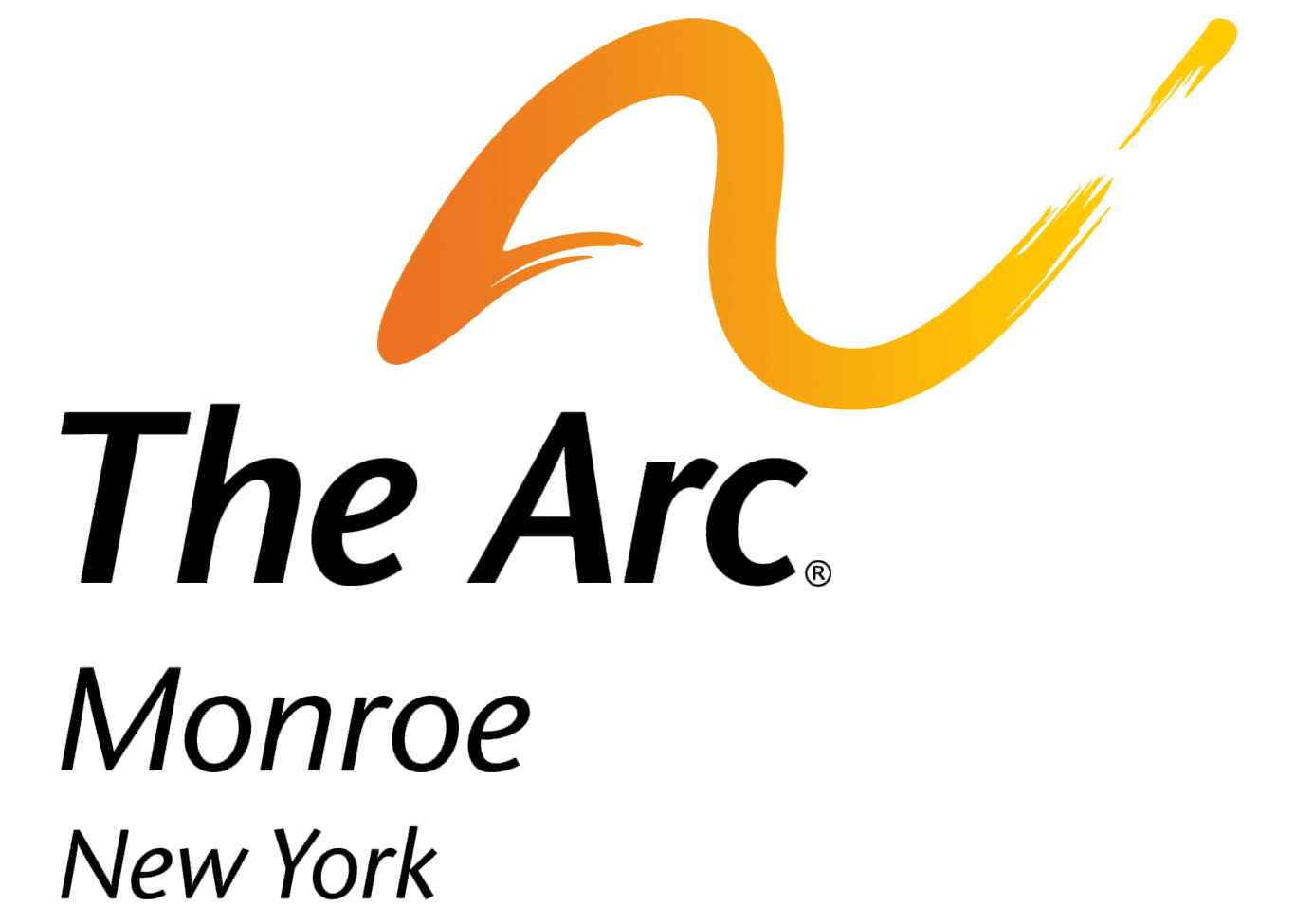“We don’t go through life telling people what we want. There’s more to communication than asking for things.”
Kaleigh Meagher, a Speech Language Pathologist at The Arc of Monroe is right. There is more to communication.
One of the functions of Kaleigh’s job is to help people with intellectual and developmental disabilities communicate, whether it’s to have a conversation, make requests, or share information. Some people with intellectual and developmental disabilities (IDD) have difficulty communicating through speech, which is most people’s primary form of communication. A speech pathologist will work with the person to find an alternative form of communication. For many people supported by The Arc of Monroe, it’s an AAC system they use, also known as an Augmentative & Alternative Communication system. These systems are used to either supplement speech or replace it altogether.
There is a range of AAC systems available for people including low-tech, no-tech, and high-tech systems.
“So, that could look like anything from using sign language or gestures, pointing, everything from like body language and facial expressions would be considered a no-tech AAC,” says Kaleigh.
Other low-tech systems could include communication boards with words in a grid form that people could point to. Another item that helps people communicate that isn’t necessarily an AAC system would be visual tools like visual schedules, first-then charts, choice boards, and visual directions. “When we give somebody a visual support, that reduces their cognitive load, and it frees up space in the brain that they can actually focus on what’s happening,” she says.
There are also high-tech systems which include using an iPad or a tablet which a person can click on buttons with their finger or use an adaptive measure to be able to communicate their thoughts.
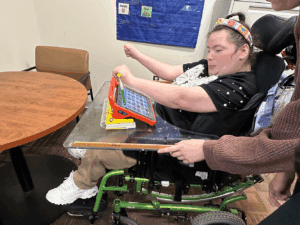
“For people who maybe have limited mobility or have unreliable movements or limited range of motion, there’s alternative access methods,” says Kaleigh. “We’ll look for reliable movements and use that to determine how they will be able to select options on a tablet.”
She goes on to describe methods like using an eye gaze system to select options based on where you look or eyebrow raising to select options. One example of someone within The Arc of Monroe who uses an alternative access method is Jordyn Carde at Lambert Day Services. Jordyn isn’t able to isolate her finger to select something on the screen, but she is able to hold things, so she uses a stylus with a T-shaped handle, so she is able to hold it and still make selections on the tablet.
However, some communication tools may still have limitations. Jordyn and her speech pathologist, Katie Hickey shared that Jordyn likes using her device to communicate and it’s helping her to work on longer sentences and ask different questions. However, Jordyn doesn’t like to bring her device with her when she leaves the Speech Pathology office. That’s because she needs a tray table to hold it and that often makes it difficult to get around.
Learning more about communication tools and how they help people with intellectual and developmental disabilities shapes the framework for how to best support them. Kaleigh says that although all these communication tools are out there and available, a lot of people with disabilities become passive communicators.
“They kind of sit back and let the staff dictate what’s going to happen, what time they’re going to do certain things, and wait for things to be brought to them instead of initiating ‘I want to do this or I’m going to do this,’” says Kaleigh. “Often, the people we support with complex communication needs struggle to initiate communication. We want to empower them and give them the tools to be independent, autonomous communicators, whatever that looks like for them.”
She says that there are misconceptions that some people’s disabilities are too severe or they’re too old and they’re unable to learn how to use a new communication tool. She says she’s heard that people will just use an ASL sign for the bathroom or food if they need something, but that’s not the only thing that they can use communication for. “We want to raise our expectations a little bit for the people we support. Is that all that we want them to be able to say?”
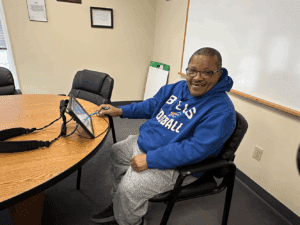
Rickey Anderson, who is supported at The Arc of Monroe’s Fairport Day Services also uses a tablet to communicate and when he’s working with the speech pathologist, he does more than answer questions through the tablet. Often, he likes to share information and carry on a conversation. He demonstrates just one example that there’s more to communication than answering questions and asking for things.
Kaleigh says this is a big part of advocating for the people we support at The Arc of Monroe. She says staff need to help people figure out how they can communicate rather than immediately saying they are unable to. “We need to reframe our thinking – it’s not about someone’s limitations; it’s about focusing on abilities and capitalizing on what someone can do.”
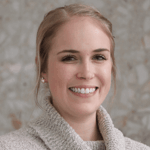
Kaleigh Meagher has been a Speech Language Pathologist at The Arc of Monroe for 8 years. She enjoys reading and crafting, going for walks and spending time with her 1-year-old son, and traveling.
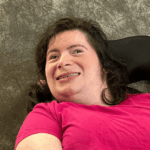
Jordyn Carde attends Lambert Day Services and enjoys going to the movies and shopping at Wegmans. Her favorite TV shows are “Barney” and “Blue’s Clues.” She also likes to tell jokes and listen to NSYNC.
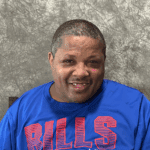
Rickey Anderson attends Fairport Day Services. He enjoys bowling and playing basketball. He also likes to eat pizza.
